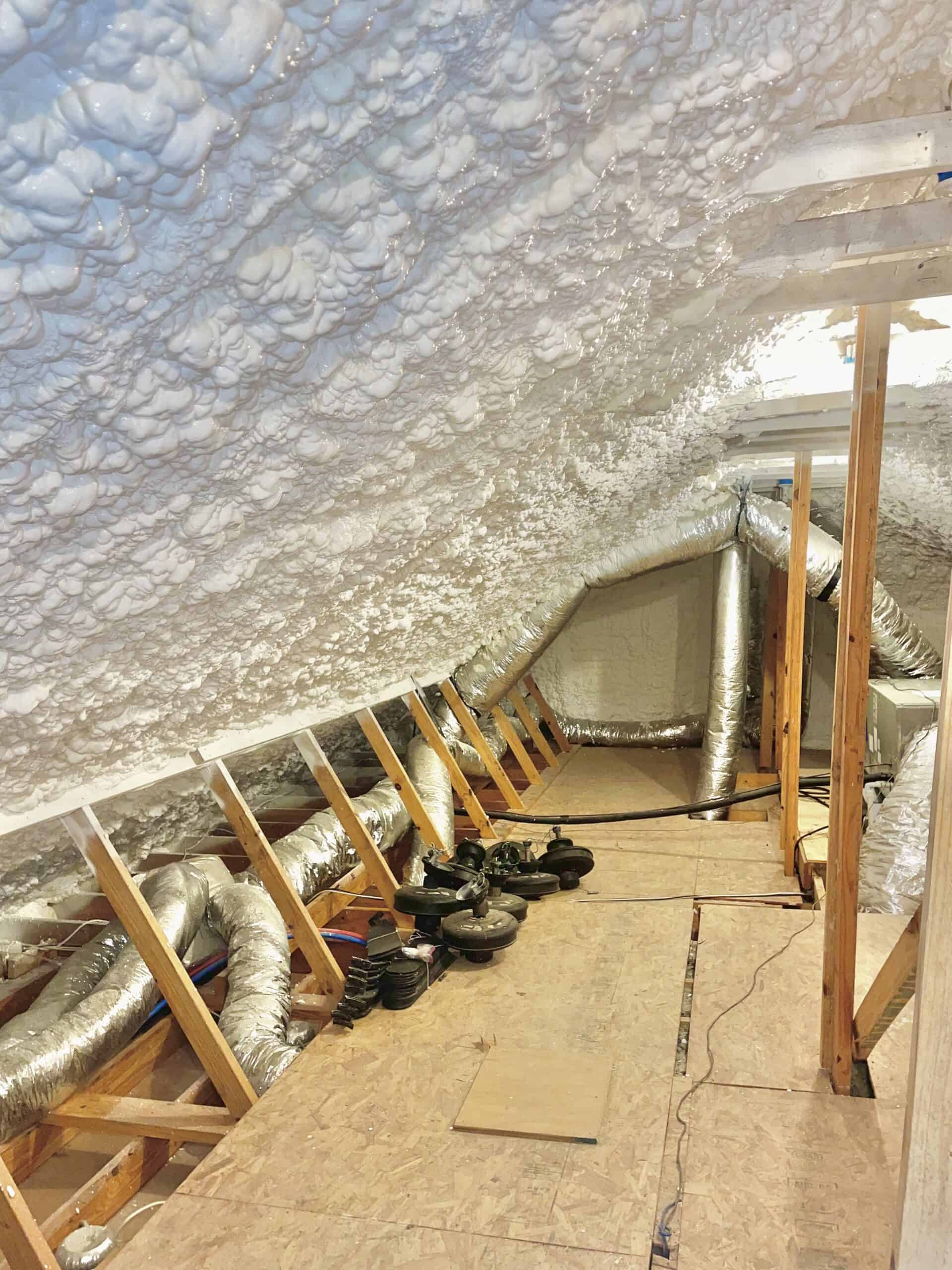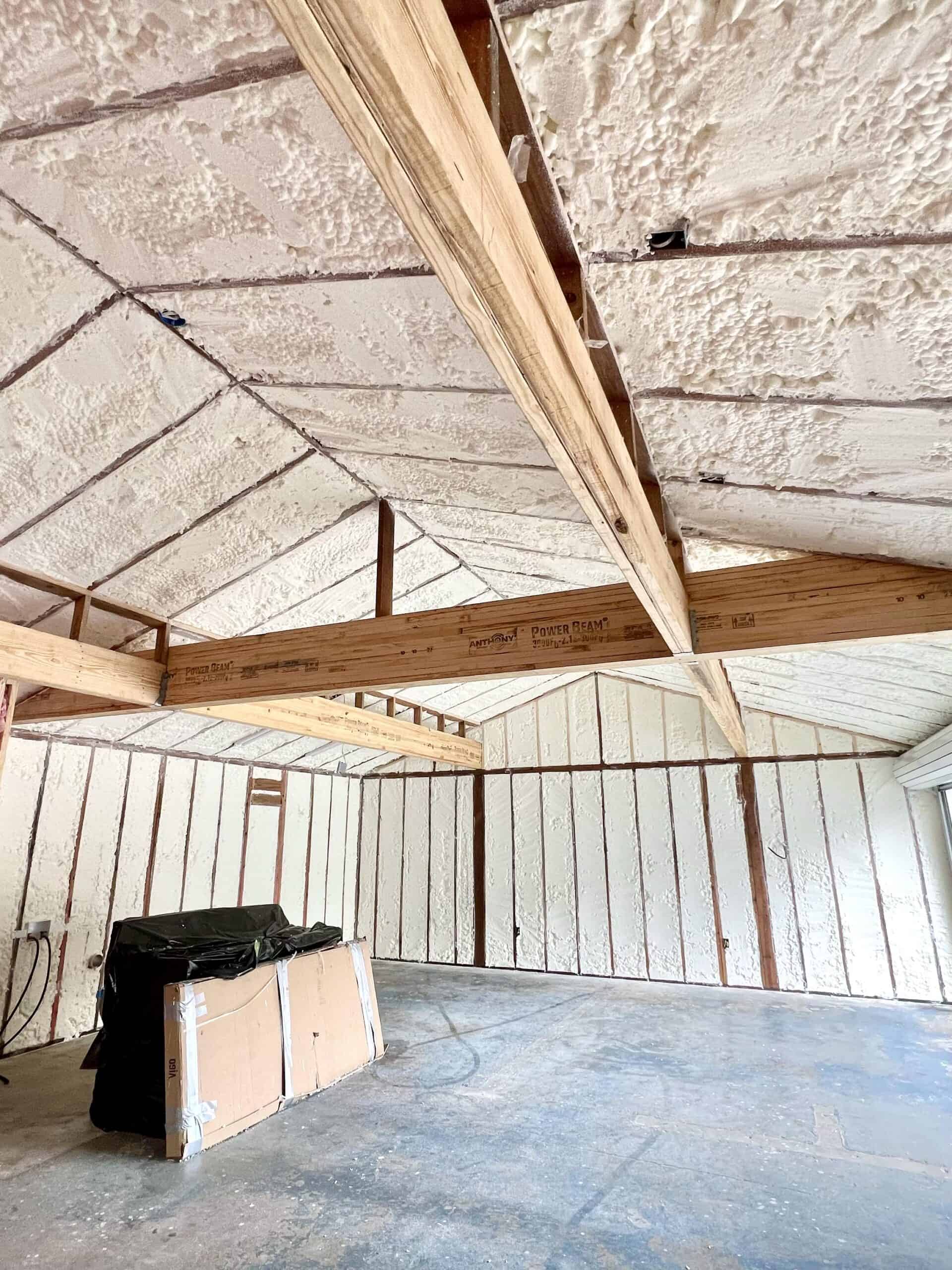Living in an old house doesn’t mean you have to sacrifice comfort due to poor insulation. Insulating an old home without tearing down walls is possible with effective methods like spray foam insulation. This process helps reduce energy bills while keeping your home comfortable year-round. By using spray foam insulation, you can seal gaps and improve energy efficiency in hard-to-reach areas like attics and crawl spaces. If you’re interested in making your old home more energy-efficient, check out how spray foam insulation can help you save money and improve comfort.
Key Benefits of Insulating an Old House
Energy Efficiency and Cost Savings
Proper insulation keeps the warmth inside during winter and cool air in during the summer. This helps reduce the energy your home uses to maintain the right temperature. With less energy needed for heating or cooling, you’ll see a drop in your utility bills. Insulating your old house is one of the best ways to save money in the long run. By using the right materials, you can keep your home comfortable year-round while using less energy. This simple upgrade can lead to big savings over time.
Improved Indoor Comfort
Insulation helps to keep your home’s temperature steady, preventing cold drafts in winter and heat from building up in summer. It blocks outside temperature changes from affecting your indoor environment. When your home is insulated well, you won’t have to adjust the thermostat constantly. The air will feel more consistent, and you’ll be more comfortable no matter the season. Insulation also helps reduce noise from outside, making your home quieter and more peaceful. It’s a simple way to improve comfort without major changes.
Methods of Insulating Without Demolition
Blown-In Insulation
Blown-in insulation is an easy way to insulate walls and attics without major work. The material is blown into spaces, filling cracks and gaps. This method works well for older homes with hard-to-reach areas. It can be added to walls without tearing them down. The insulation fills the empty spaces, blocking heat loss in winter and keeping cool air inside during the summer. It’s fast, effective, and doesn’t require major construction. Blown-in insulation is a simple solution to improve energy efficiency without disturbing the structure of your home.
Spray Foam Insulation
Spray foam insulation is applied directly to walls, ceilings, and other areas. It expands to fill cracks and gaps, forming an airtight seal. This process prevents heat from escaping in winter and keeps cool air inside during warmer months. Spray foam also reduces noise and helps maintain a consistent indoor temperature. Unlike other insulation types, it can reach tight spots where air leaks are common. It’s a long-lasting solution that can drastically improve your home’s comfort and energy efficiency. Spray foam insulation is one of the best choices for older homes.
How Spray Foam Insulation Works for Old Houses
Expands to Seal Gaps
Spray foam insulation is applied as a liquid and expands quickly to fill every gap and crevice. Once it expands, it forms a solid, airtight barrier. This seal prevents drafts from entering your home. It works well in older homes where there may be hidden gaps in the walls or attic. The foam expands to fit every corner, blocking air leaks that waste energy. As a result, it helps keep your home warmer in winter and cooler in summer, improving your home’s comfort all year long.
Long-Term Durability
Spray foam insulation is built to last. It doesn’t shrink or settle over time, which means it stays in place for decades. Unlike some insulation types, you don’t need to replace it every few years. Once applied, it provides reliable performance for a long time. This durability makes it especially useful for older homes, where other forms of insulation may not last as long. Spray foam can save you money in the long run by reducing the need for frequent replacements, making it a smart investment.
Areas of Your Old House to Insulate
Attics and Roof Spaces
Insulating your attic is one of the most effective ways to maintain your home’s temperature. Proper attic insulation keeps heat from escaping in winter and prevents warm air from entering in summer. This helps your heating and cooling systems work more efficiently. Attic insulation also protects your roof from wear. Without insulation, temperature changes can lead to roof damage. Adding insulation in these areas can save you money on energy bills and extend the life of your roof.
Crawl Spaces and Basements
Crawl spaces and basements are often overlooked, but they play a big role in regulating the temperature in your home. Insulating these areas helps prevent cold air from seeping into your living spaces. It also stops moisture from building up, which can lead to mold and mildew. When these areas are insulated, your home becomes more comfortable. It also helps improve energy efficiency by preventing drafts. Insulating crawl spaces and basements is a simple way to make your home warmer and more energy-efficient.
Choosing the Right Insulation for Your Home
Factors to Consider
Choosing the right insulation depends on your climate, budget, and the area you want to insulate. If you live in a colder area, you may need more insulation to keep the heat in. Warmer regions need insulation that prevents heat from entering. Your budget plays a role in the choice as well. Some types of insulation cost more than others. Also, consider the size of the space. Larger areas might need bulkier materials, while smaller ones work well with spray foam or blown-in insulation.
Professional vs. DIY Installation
You can install insulation yourself or hire a professional. DIY installation saves money but may lead to mistakes. It’s important to have the right tools and know-how. Professionals, on the other hand, guarantee proper coverage and better results. They will also help you choose the best insulation type. If you have a large area to insulate or are unsure, a professional can finish the job faster and more efficiently. Hiring a pro may cost more upfront, but it could save you in the long run.
First Defense Insulation Makes Insulating Your Old House Easy
Proper insulation can significantly improve the comfort and energy efficiency of your old home without the need for demolition. Methods like spray foam insulation seal gaps and prevent air leaks, reducing energy bills and keeping your home cozy throughout the year. First Defense Insulation offers the right solutions for older homes, from attics to crawl spaces. Our team is ready to help make your home more energy-efficient without tearing down walls. Reach out to us today to get started on improving your home’s insulation.

